How to Remove Dead Skin From Feet: 6 Easy Ways to Get Them Soft + Keep Them Smooth
These tips are all dermatologist-approved
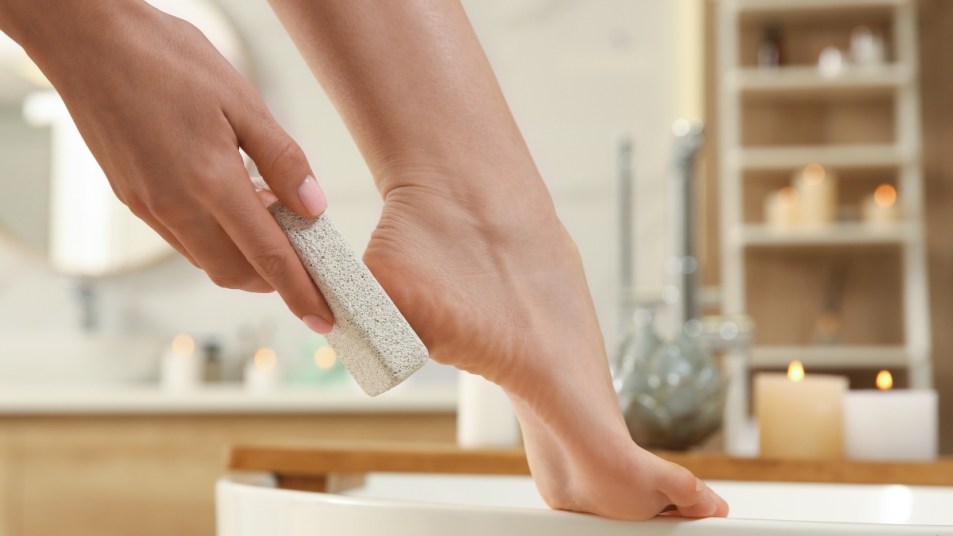
Feet put up with a lot from us every day, and they tend to require a good amount of TLC. One of their major issues? Dry, dead skin. It’s a sensory nightmare, not to mention just plain unappealing. Luckily, there are plenty of ways to get rid of old dead skin (no scraping needed) as well as simple tricks to keep it from coming back. Keep scrolling to discover how to remove dead skin from feet with ease!
What causes dead skin on feet
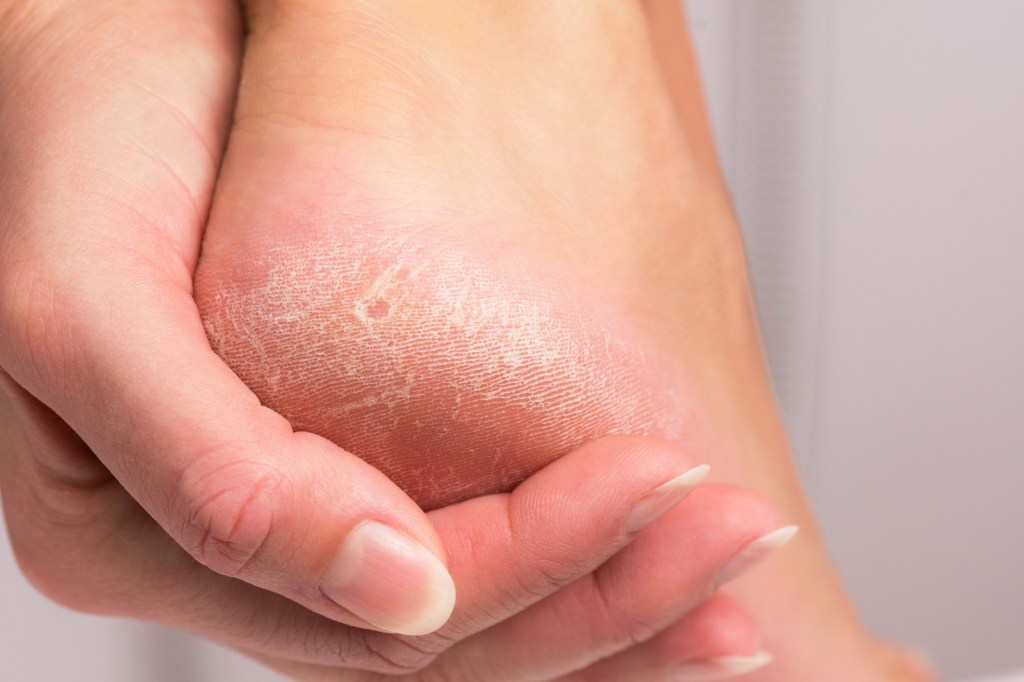
Time for a science lesson, courtesy of Donna Hart, MD, a board-certified dermatologist at Westlake Dermatology. “Skin cells, known as keratinocytes, dehydrate and flatten as they go through their life cycle and move up toward the surface of the skin, known as the stratum corneum,” she says. “This is what helps protect the softer live skin cells underneath.” Feet in particular have a very thick stratum corneum — they take a lot of abuse from bearing the weight of our daily activities. As a result, feet can feel and appear very rough and dry compared to skin in other areas of our bodies.
According to Anne Truitt, MD, a board-certified dermatologist at Skin Surgery Medical Group, you can attribute dead skin on feet to other things as well: everything from dry weather and sun exposure to friction and harsh soaps. “Medical diagnoses such as eczema, psoriasis and ichthyosis can also cause dry feet with dead skin,” she explains. That said, it’s possible that you may confuse athlete’s food with dry skin. “If our steps don’t relieve dry skin on your feet in a few weeks, then see a board-certified dermatologist.”
How to remove dead skin from feet: 6 simple ways
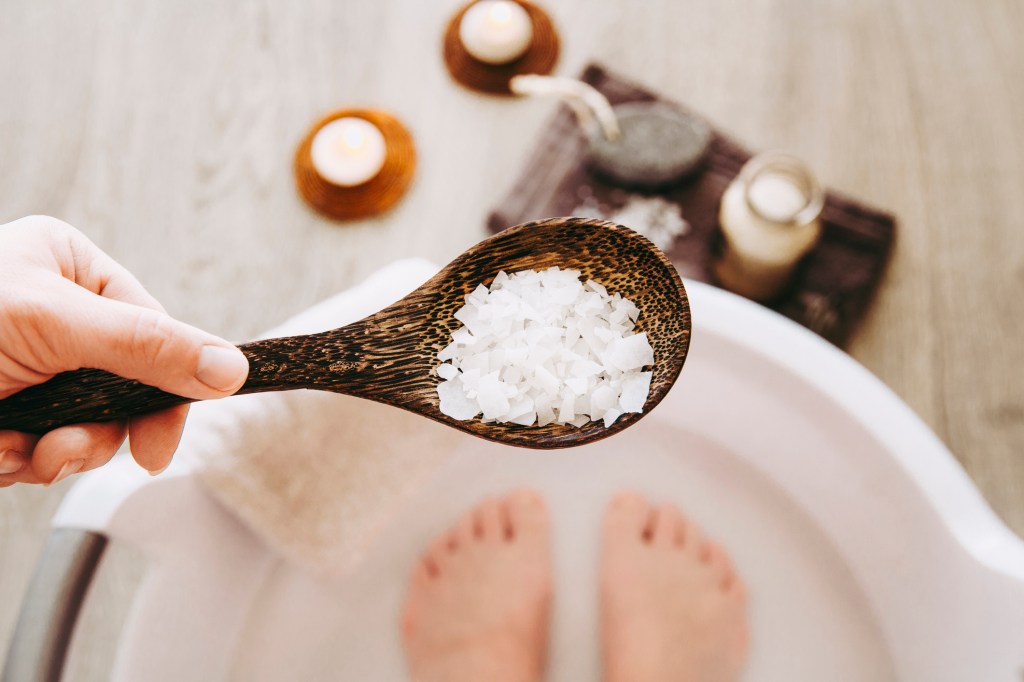
1. Vinegar soak
Exfoliation is the name of the game when it comes to removing dead skin from feet, but you’ll want to soften the skin prior. This helps reduce irritation and maximize effectiveness. One of the best ways to do this, Dr. Truitt says, is a 5-10 minute soak with 10 parts water and one part plain white vinegar. “It’s also an excellent antimicrobial and antifungal treatment,” she explains. You can also employ an epsom salt soak or simply warm water.
Immediately after exfoliation, Dr. Truitt recommends you moisturize with a heavier cream or ointment with ingredients such as dimethicone, petrolatum, lanolin or lactic acid, helping keep dry, dead skin at bay.
2. How to remove dead skin from feet: Pumice stone
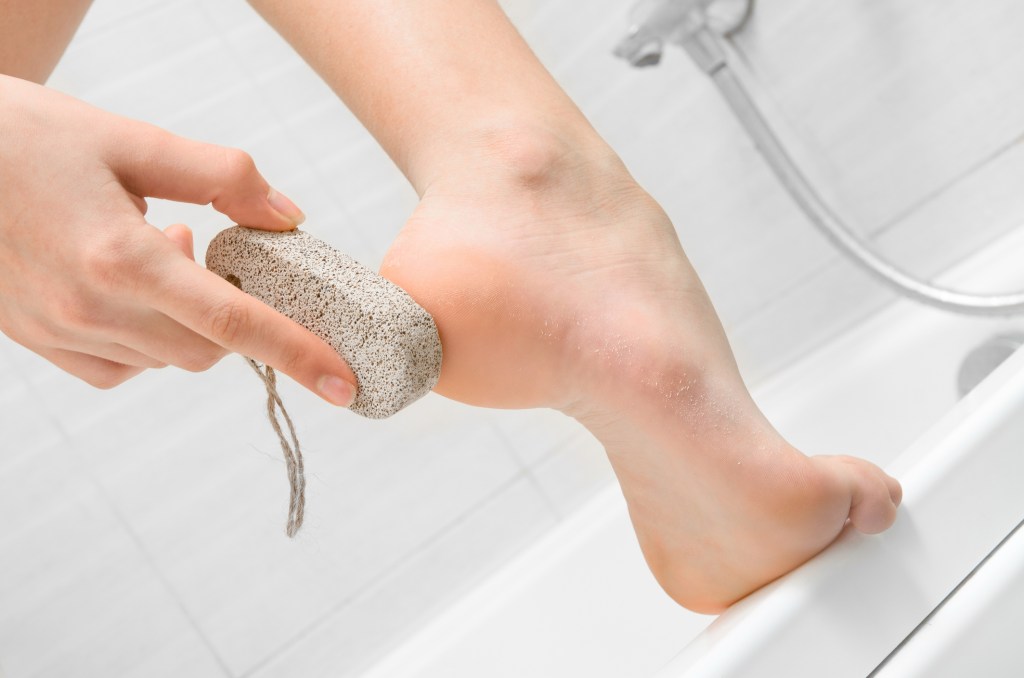
A popular method of mechanical removal is the pumice stone, which Dr. Hart says can help soften the top layer of your skin by helping dry, dead skin cells come off. “I would not recommend pumice on dry skin, as this can lead to abrasions of the area,” she continues. “It is important to keep pressure gentle.”
3. Foot peel
“For a more intense treatment, periodic application of foot peels can be used,” explains Dr. Hart. “Like facial peels, foot peels use a blend of exfoliating ingredients, which means they help soften and remove part of the dead skin cell layer at the surface of the skin.” Some also include humectants, which are ingredients that help infuse moisture into the skin. In fact, women in Japan wear booties lined with glycolic and citric acids that break down desmosomes (protein adhesives that bind dead skin cells together), ultimately removing all the dead skin in just one easy, pampering treatment.
How it works: You slip on the booties, then relax for one hour and rinse. Four days later, your heels will begin to peel dramatically. And in one week, the dry, hardened skin will be gone, revealing silky-soft soles. One that works well? Baby Foot Original Exfoliation Foot Peel.
Pro tip: The actual peeling process can make some a little squeamish as sheets of dead skin come off of the feet like a snake shedding its skin. “You’ll find loose pieces of skin around your house for days, but wearing socks during the peeling process will help,” she finishes. But it isn’t painful and the peeling proves it’s working. The results are phenomenal!
4. How to remove dead skin from feet: Paraffin wax
If you’re feeling fancy, take a page out of your favorite nail salon and give yourself a paraffin wax treatment. This is done by melting the soft wax to a medium temperature (not hot enough to burn you), dipping your feet into it multiple times, wrapping your feet in plastic and then removing the wax after it hardens. The entire process is similar to what you’d expect from an eyebrow or lip wax, but instead of waxing off hair, you’re waxing off dead skin.
5. Exfoliating moisturizer
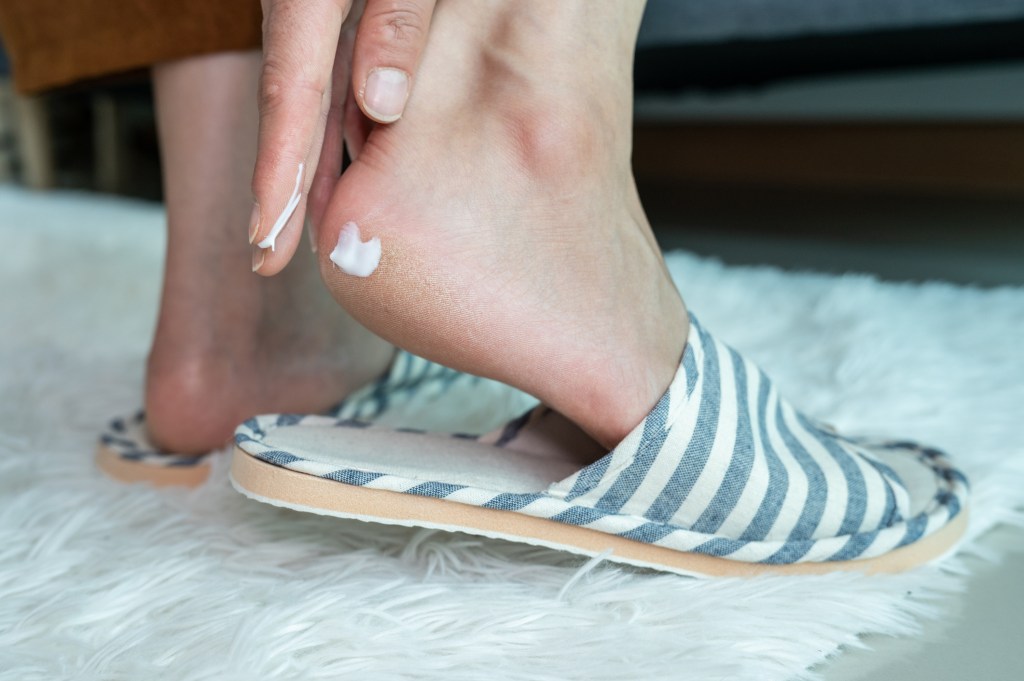
Why work harder when you can work smarter? Moisturizers with exfoliants are the ideal two-in-one, acting as both a treatment and a preventative. “I especially like foot creams that contain urea, an ingredient that has both exfoliating and hydrating properties,” Dr. Hart recommends.
6. How to remove dead skin from feet: Foot scrub
A foot scrub is exactly what it sounds like: the small particles are used to scrub the dry skin off your feet. Dr. Truitt’s favorite is The Body Shop’s Peppermint Reviving Pumice Exfoliating Foot Scrub, but you can also mix epsom salt (which is actually magnesium sulfate, not salt) with some kind of oil such as olive, jojoba or avocado for the same effect. No epsom salt on hand? Dr. Truitt advises you look to your pantry for other exfoliants such as oatmeal and sugar.
How to prevent dead skin on feet
Dr. Hart says prevention isn’t necessarily the goal here — “every part of your body has a dead skin layer that’s vital for protection.” Without this layer, your skin would be raw and sensitive. That said, you can keep it from building up too much with this guidance from Dr. Truitt:
- Wash with a gentle, hydrating cleanser
- Moisturize daily
- Exfoliate once a week
- Limit time in open shoes
- Wear comfortable shoes to reduce friction and pressure
For more on feet, click through these stories:
Are Your Feet Always Freezing? *This* May Be the Surprising Culprit
Dermatologists Say Baking Soda Removes Calluses From Your Feet Better Than Fancy Salon Treatments



















